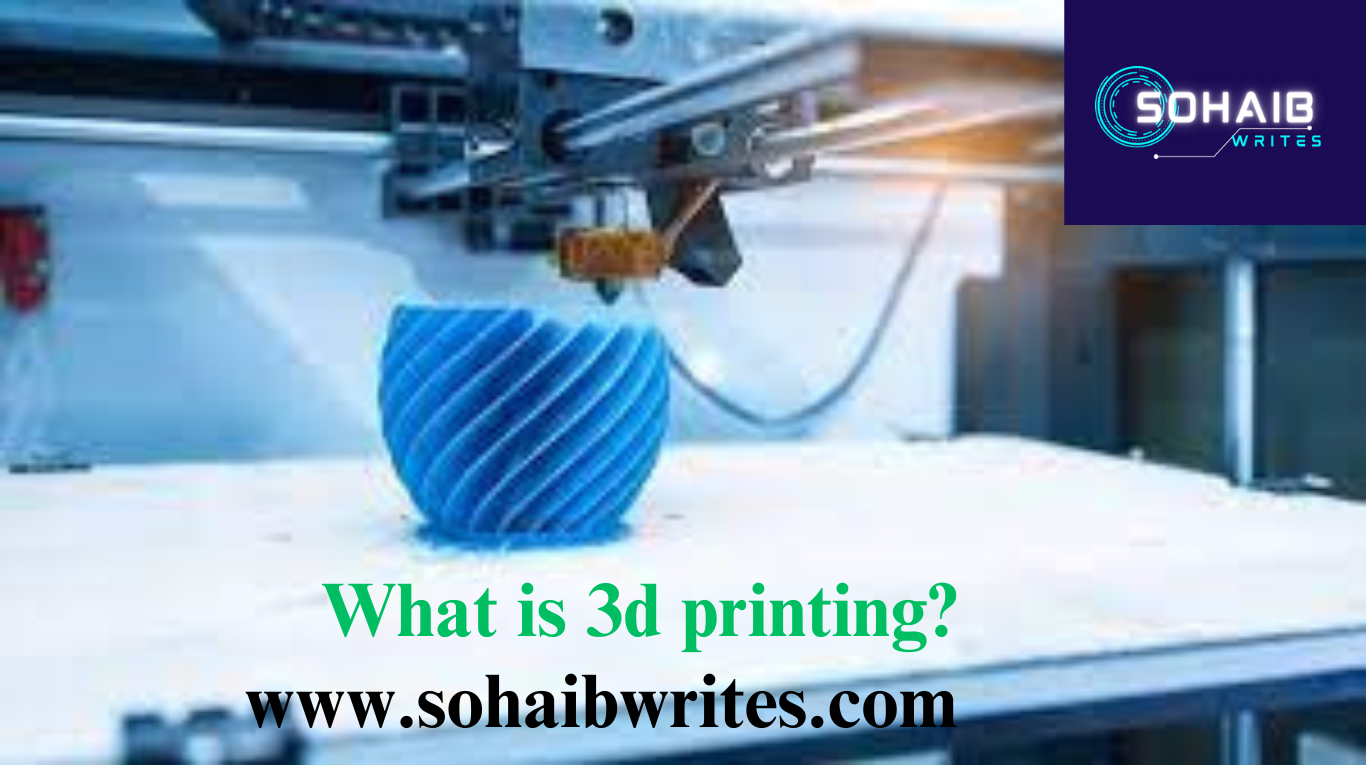3D printing is a method of transforming a computer model into an actual, solid, three-dimensional item by putting down several consecutive, thin layers of material. 3D printing has exploded in popularity because it makes manufacturing more accessible than ever before. This is due in part to the low cost of the printers (the starting price for a basic 3D printer is around $300), but also to their compact size in comparison to traditional production.
How Does 3D Printing Work?
3D Software
First, a virtual model of the thing is created. This design will function as a blueprint that the 3D printer can read. The virtual design is created with computer-aided design (CAD) software, Solidworks, or Autodesk Fusion 360, which can generate exact drawings and technical representations. A virtual design may also be created using a 3D scanner, which generates a replica of an actual thing by photographing it from several angles.
Slicing: From printable file to 3D Printer
After creating the virtual model, it must be ready for printing. This has been done by splitting the model into numerous layers. Slicing uses specialized software to slice the model into hundreds or even thousands of tiny, horizontal layers.
The slices are now ready to be uploaded to the 3D printer once the model has been sliced. This is done by connecting the sliced model to the 3D printer through a USB cable or Wi-Fi connection. When the file is uploaded to the 3D printer, each slice of the model is read and printed layer by layer.
3D Printing Industry
3D printing adoption has reached critical mass, with those that have yet to incorporate additive manufacturing into their supply chain joining an ever-shrinking minority. Whereas 3D printing was first only appropriate for prototype and one-off manufacturing, it is now rapidly growing into large-scale production.
The majority of current 3D printing demand is industrial in nature. According to Acumen Research and Consulting, the worldwide 3D printing business would be worth $41 billion by 2026.
3D printing technology is set to alter practically every major sector and affect the way we live, work, and play in the future as it progresses.
3D printing processes
3D printing, or additive manufacturing, can be classified into seven categories according to ISO/ASTM 52900 additive manufacturing – general principles – terminology.
- Binder Jetting
- Direct Energy Deposition
- Material Extrusion
- Material Jetting
- Powder Bed Fusion
- Sheet Lamination
- Vat Polymerization
3D printing materials
A complete 3D printing material overview
The number of 3D printing materials available grows fast as market demand for specific materials and mechanical properties drives developments in material science. This makes it hard to provide a comprehensive review of all 3D printing materials, but because each 3D printing method is only compatible with particular materials, some broad generalizations may be made.
Thermoplastic and thermoset polymers are by far the most common 3D printing materials, but metals, composites, and ceramics can also be 3D printed.

Materials can also be grouped according to certain properties, such as affordability, chemical resistance, dissolution, flexibility, durability, heat resistance, rigidity, water resistance, and UV resistance. The majority of hobbyist applications use either PLA or ABS, which are the most widely used materials in FDM 3D printing, whereas many industrial applications need robust polymers like Nylon 12.
Applications of 3D printing
3D printing is exceptionally useful for prototyping. Speed is everything in prototyping, and the ability to move from CAD to print with close to zero set-up costs means 3D printers can produce parts fast and have great unit economics for single-part and small runs.
- Medical 3D printing
- There are several uses for 3D printing in the medical field, and each year scientists and doctors find innovative new applications for this quickly developing technology. Because of its speed and adaptability, 3D printing is ideal for creating specialized implants, prosthetics, and patient-specific reproductions of bones, organs, and blood arteries. Additionally, it is utilized to 3D print medical devices that can save lives, anatomical models, surgical instruments, and a variety of other advancements.
- Automotive 3D printing
- Automakers use 3D printing in the automobile sector to evaluate shape and fit, experiment with aesthetic treatments, and ensure that all parts perform and interact as intended. It also offers a versatile solution for quick turnaround of jigs, fixtures, and grips, the creation of bellows, the engineering of intricate ducting, and the rapid manufacture of complex, lightweight mounting brackets.
- 3D printing jewelry
- There are several reasons why so many designers use 3D printing to create jewelry. The technology allows jewelers to produce very complex, highly customizable designs while avoiding some of the limitations of previously popular jewelry-making techniques such as CNC machining, handcrafting, and lost-wax casting. Today, precious metals can be 3D printed in a variety of patterns and designs in a variety of patterns and designs quickly and cost-effectively.
Our blog sohaibwrites is providing the latest information related to news, education, freelancing, technology, and e-commerce tips. You can read in our blog about virtual university in Pakistan, Z-Library the world’s largest ebook library.


[…] Jetting is a type of 3D printing. The binder jetting procedure employs two materials: a powder and a binder. The binder works […]
your blog? Its very well written; I love what youve got
[…] Businesses now have access to a variety of printing technologies, such as industrial, digital, and 3D printing, each with special advantages and […]